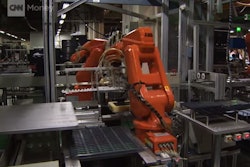To err is human — that’s why automakers are trying to put safety into the hands of computers through innovations like self-driving cars.
But a recent study by the University of Michigan Transportation Research Institute found that autonomous cars are getting in as many as five times more crashes than cars with human drivers, at 9.1 crashes per 1 million miles. Human drivers average 1.9 per million miles.
So, what gives?
Well, let’s consider. There are a few factors that lead the study itself to state “we cannot rule out, with a reasonable level of confidence, the possibility that the actual [crash] rates for self-driving vehicles are lower than for conventional vehicles.”
The study compared the driving records of self-driving cars from three companies — Google, Delphi and Audi — with the records of all conventional cars in 2013. The autonomous cars had only about 1.2 million miles under their belts, while conventional vehicles average 3 trillion miles each year.
Not only is that a tiny sample size — self-driving cars had less than a millionth of the data of conventional vehicles — but those vehicles are also for testing only. This technology isn’t final, and the cars aren’t yet in commercial production.
These cars were also held to a higher standard of accident reporting. In a July report, the National Highway Traffic Safety Administration estimated that about 30 percent of crashes go unreported. On the other hand, most of the self-driving vehicles’ miles were put on in California, where law requires that any accident involving even mild damage and a self-driving car must be reported.
Driverless and Talking Cars: New Technology Transforms the Way We Travel
Accounting for underreporting, however, still leaves self-driving cars with twice the crash rate.
As The Verge notes, some of those “extra” crashes could be caused by the vehicle not making unsafe maneuvers to avoid crashes, like a human would. That logic might not pay off in the statistics, but none of the accident reports put the autonomous cars at fault, and the crashes were less severe than that of conventional vehicles.
Perhaps if the proportion of self-driving cars on roadways would increase, fewer “unsafe maneuvers” — such as swerving into another lane to avoid another car — would be necessary.
The study might be in, but the jury is still out for the future of driverless travel. Although these preliminary studies are important to follow, they’re far from the final word, and self-driving cars are far from their final consumer-ready form.
Have the results of this study impacted your view of self-driving vehicles? How do you think the technology should be improved? Comment below or tweet @MNetKatie.






















